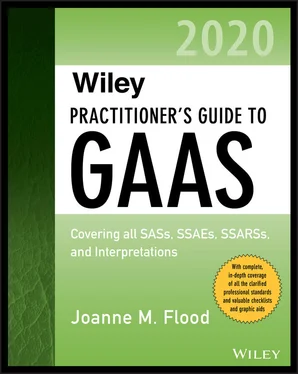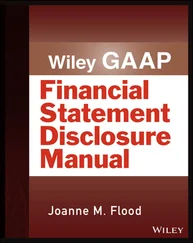Direction, Supervision, and Performance
The engagement partner is responsible for the direction, supervision, and performance of the engagement in compliance with GAAS, legal and regulatory requirements, and firm policies. The partner is also responsible for the appropriateness of the report, performance of reviews, and that sufficient appropriate evidence has been obtained. (AU-C220.17–.19)
The auditor with final responsibility for the audit should inform members of the engagement team about:
Their responsibilities
The responsibilities of the partners
The objectives of the procedures they are to perform
Nature of the entity’s business
Risk-related issues
Problems that may arise
Details of the approach to the engagement
(AU-C 220.A12)
Supervision includes:
Tracking the engagement progress
Considering the competence of engagement team members
Addressing significant findings or issues
Identifying matters for consultation or referral to other team members
(AU-C 220.A14)
Engagement Performance
Reviewing Work
The engagement partner is responsible for reviews that follow the firm’s policies and procedures. In order to be sure he or she is satisfied that the audit evidence is sufficient and appropriate to support the conclusion, the engagement partner should review the audit documentation and discuss the engagement with the auditor. This should be done on or before the date of the auditor’s report. (AU-C 220.18–.19) It is important that the partner review the documentation and not just rely on staff opinions.
The suitably experienced auditors should review the work of each team member and consider if:
1 The work was performed in accordance with professional standards and legal and regulatory requirements.
2 Significant issues were raised and considered.
3 Consultations, if necessary, took place and were documented.
4 The nature, timing, and extent of the work were appropriate.
5 Work performed supports the conclusion and is documented, and the evidence supports the auditor’s report.
6 Objectives were achieved.
(AU-C 220.A16)
The engagement partner’s review should allow time to resolve issues. (AU-C 220.A17)
The engagement partner is also responsible for ensuring that team members undertake consultation on matters outside their expertise. This consultation may be with other team members, other audit firm staff, or experts outside the firm. The partner must be satisfied with the consultations in terms of nature and scope and that the conclusions are understood and have been implemented. (AU-C 220.20)
Engagement Quality Control Review
If the firm requires a quality control review, the engagement partner should determine that a reviewer has been appointed in a timely manner and that the engagement partner discusses with the reviewer any significant findings or issues. The audit report should not be released until the quality control review is completed. (AU-C 220.21)
As part of the review, the reviewer should:
Discuss the significant findings with the engagement partner
Read the financial statements
Read the draft audit report
Select and review audit documents related to significant judgments
Evaluate conclusions
Consider whether the report is appropriate
(AU-C 220.22)
If differences of opinion arise among firm personnel about accounting or auditing issues in an audit, the engagement team should follow the firm’s policies and procedures. (AU-C 220.23) Procedures to consider may include:
1 Consultation to attempt resolution
2 Documentation of an assistant’s disagreement, if he or she wants to be disassociated from the final resolution
3 Documentation of the basis for the final resolution
The audit firm must establish a monitoring process. Policies and procedures should provide reasonable assurance that the above elements of quality control are suitably designed and effectively applied. (AU-C 220.24) Monitoring involves:
1 Relevant and adequate policies and procedures that are complied with by members of the firm
2 Appropriate guidance and practice aids
3 Effective professional development activities
Audit documentation should include:
Compliance and ethical issues identified
How those issues were resolved
Conclusions on independence compliance
Discussions that support those conclusions
Conclusions reached regarding the acceptance and continuance of audit engagements
Nature and scope of consultations undertaken during the course of the audit engagement
Conclusions resulting from those consultations
(AU-C 220.25)
In addition, the engagement quality control reviewer should document:
That the firm’s engagement quality control procedures were performed
The date the engagement quality control review was completed
An affirmation that the reviewer is not aware of any unresolved matters that would cause the reviewer to believe that the judgment and conclusions of the engagement team were inappropriate.
(AU-C 220.26)
4 AU-C 230 Audit Documentation
Scope
Definitions of Terms
Objective of AU-C Section 230
Requirements
Requirement for Audit Documentation
Form, Content, and Extent of Audit Documentation
Ownership and Confidentiality
Standardization of Audit Documentation
Preparation of Audit Documentation
Quality of Audit Documentation
Audit Documentation Deficiencies
Documentation Requirements in Other Sections
Interpretations
Providing Access to or Copies of Audit Documentation to a Regulator
AU-C 230 Illustrations
AU-C 230 concerns the audit documentation the auditor is expected to prepare. See also other standards, laws, or regulations. (AU-C 230.01)
Source: AU-C 230.06.For definitions related to this standard, see Appendix A, “Definitions of Terms”: Audit documentation, Audit file, Documentation completion date, Experienced auditor, Report release date.
OBJECTIVE OF AU-C SECTION 230
AU-C Section 230.05 states that:
The objective of the auditor is to prepare documentation that provides
1 a sufficient and appropriate record of the basis for the auditor’s report; and
2 evidence that the audit was planned and performed in accordance with GAAS and applicable legal and regulatory requirements.
(AU-C Section 230.05)
REQUIREMENTS
Requirement for Audit Documentation
The auditor must prepare audit documentation, on a timely basis, in sufficient detail to provide evidence:
About the conclusions reached; and
That the audit was planned and performed in accordance with GAAS and relevant legal and regulatory requirements.
(AU-C 230.02)
The form and content of the audit documentation should be designed for the specific engagement.
Audit documentation also:
Helps the team plan the audit
Provides information for supervisors to direct the audit
Provides documentation for review
Supplies backup that the team performed as required by standards
Provides files to be used on future audits
Provides documentation for internal review and inspections and external reviews
Provides documentation for successor auditors
Helps auditors understand prior year words
Читать дальше












